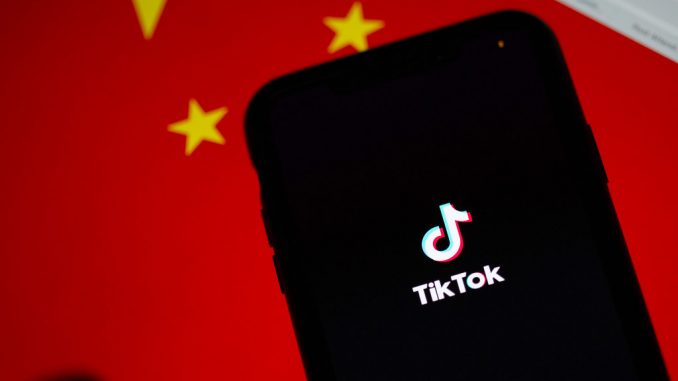
The dark horse
Speaking of the most popular social media app among teenagers, TikTok must be the one that quickly comes to mind. With the app being formally launched in 2018, until 2021, it has reached a billion users worldwide within only three years. This article will examine TikTok’s success by first reviewing its history, operation field, and factors determining its success. It will then investigate how TikTok generates revenue from its daily practices and discuss several concerns related to the platform.
What is TikTok?
TikTok is a video-sharing social media platform that allows users to watch, make and share short video clips (about 15 seconds) by simply using their mobile devices. The platform was first established by ByteDance back in 2016 and originated from the Chinese app called “Dou yin.” The platform has experienced rapid expansion in the Chinese market. Next, in 2018, TikTok was introduced as a merger of the two already-popular apps, Dou yin and Musical.ly. in order to share their user base and enter the US market. (Madhav, 2021)
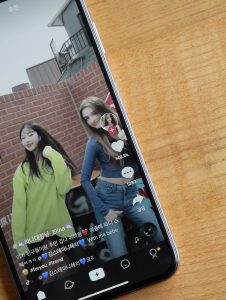
Fields of operation and Road to success
TikTok is a platform with a mix of music, lip sync videos and micro-blog content that focuses on short-form video entertainment. (Daniel, 2021)
“A short video app is a new type of social software featuring easy shooting, playing, editing and sharing based on mobile intelligent terminals.” (Feng, Chen and Wu, 2019, p.1)
Like other social media platforms, TikTok builds on participatory culture and act as a medium to deliver and share user-created content. With TikTok, users can access videos covering almost all categories. Taking advantage of low production threshold, solid and easy-to-use video editing functions, convenient sharing and low barriers of entry (Feng, Chen and Wu, 2019, p.2), users on TikTok act as both content viewers and content creators.
The key to TikTok’s success is not that of a secret: it is the advantage of the product’s exclusive features and unique interactive experience. (Feng, Chen and Wu, 2019, p.1) By 2021, TikTok has an estimated 1.1 Billion users worldwide, and almost 60% of its users are between the age of 16 and 24. (Daniel, 2021) The app seems most appealing to Generation Z due to its creative, interactive and fragmented nature. Different to traditional video apps, videos from short video apps tend to be shorter in time length, more integrative and entertaining, thus making it smoother to fit in people’s fragmented time. The videos often become highly memorable as the app’s built-in editing tools and templates were designed to present the story in ways that leave the strongest impression. (Parentzone, n.d.) Information needs to be condensed within 15 seconds through various cuts, camera transitions and accompanied by music to maximise viewing experience as well as evoke a sense of excitement. For example, during the quarantine of covid-19, people were viewing and sharing how desperate the life of “isolation” was for others and for them, hence finding commonness and a sense of community. Overall, with providing services to 150 markets and supporting 75 languages (Madhav, 2021), TikTok is becoming one of the world’s most influential media platforms at the age of short videos.
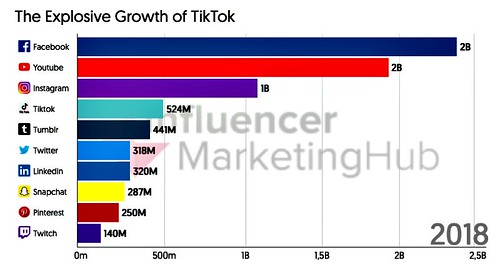
How does TikTok make money?
TikTok is a platform that supports multiple types of economic activities and offers a multiplicity of services. It follows the general business model of a neoclassical approach. TikTok constructs a multi-sided market that is similar to the practice of many other social media platforms. With one end facing the users, and one end connecting with advertisers, a multi-sided market offers multiple sellers and customers. (Mansell and Steinmueller, 2020, p.38) Users are unconsciously “selling” their data and preferences to the platform in return for the free use of the platform’s services. On the other hand, TikTok recombines user information and generates revenue by showing advertisements to support free posting services. (Mansell and Steinmueller, 2020, p.38) Therefore, the platform acts more like an intermediary or matchmaker of the associated groups.
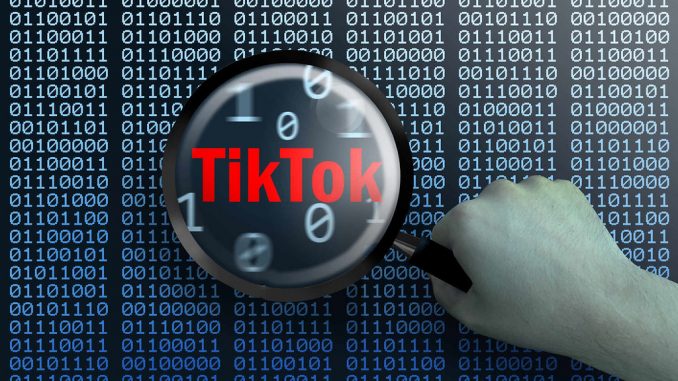
To better assist small to medium enterprises, TikTok has announced the “TikTok for Business” campaign in June 2020, an advertisement manager that provides creative and straightforward tools to compose and manage advertisements on the app. Its advertising services can range in forms of In-Feed advertising, Brand Takeovers, and Branded Hashtag Challenges (e.g. Samsung We Are Social #VideoSnapChallenge). (Madhav, 2021) The platform has made the campaign into a self-serving model where advertisers can design, select the target audience and then launch advertisements independently (instructions on the website) without contacting the sales team. (TikTok For Business, 2021) Since the model is less costly and highly replicable, it matches very well with the practice of small to medium businesses.
Concerns
Once something has gone viral, criticisms and concerns will soon be raised, and it happens the same with TikTok. With the global TikTok wave, scholars and Western media have been reporting a series of risks and concerns associated with the billion-users app.
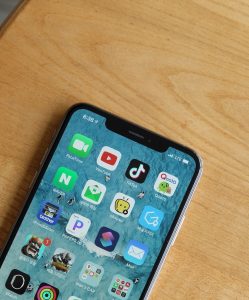
TikTok collects sensitive personal information
The first and most widely discussed is the topic of individual cyber security. As Dijck, Poell and Waal (2018) discussed, user agreement defines and shapes the relationship between users and the platform owners and can also be used to set the norm or value with regards to privacy.
TikTok has stated in the policy that it collects “information you provide in the context of composing, sending, or receiving messages.” By agreeing to the terms of service and giving permissions to access (which you may not even look at when ticking boxes), nearly everything bits of information is recorded and collected by the app. Including one’s viewing history, preferences, location, phone model and contact list. (OT, 2021) The user agreement would not usually cause a problem because many other apps also ask for the same permission. However, TikTok has a pre-record for illegally collecting the data of children under 13 years old. It resulted in having to pay a £4.2m fine to the US Federal Trade Commission. (Parentzone, n.d.) Hence, the app has been under high criticism of privacy leakage.
Concerns on National Security
TikTok is also under the scrutiny of potential misconduct that threatens Australia’s Cyber and National security. Andrew Hastie, the Federal MP and chairman of parliament’s Intelligence and Security Committee, expressed his concern over Australian teenagers’ usage of TikTok to ABC News. (Tobin, 2020) He is afraid the app collects too much personal data and could share their private information with governmental authorities in China.
“China’s National Intelligence Law of 2017 means the Chinese Government can compel businesses to share information with them.”- Andrew Hastie

Several parties have already taken actions to work against the potential information leakage. For example, TikTok is currently banned by the US Army and Navy, also in the Pakistan and India border out of the same security concerns. (OT, 2021)
Questions remain as to whether the Chinese app is sharing its user data with the Chinese government, and if the authorities are using the platform as a potential tool for censorship and surveillance.
Political influences & Misinformation and disinformation
The Wall Street Journal has also communicated its concern on how TikTok is generating too much political content in the US (with users posting videos to express their political views). It is afraid that many of these videos spread misinformation and fake news about political events, such as the US presidential election and propose jokes based on International relations issues(e.g. #WW3).
Conclusion
TikTok’s success story has introduced media users to the age of short-video entrainments. Although risks and security concerns still remain as some of its challenges, the app has still portrayed a successful platform business model through enhancing creativity, and room for unlimited possibilities in our social media life.
Bibliography
Daniel. (2021). What is TikTok? Why Is It So Popular? . Retrieved from Brandastic.com: https://brandastic.com/blog/what-is-tiktok-and-why-is-it-so-popular/
Dijck, J., Poell, T., & Waal, M. (2018). The Platform Society as a Contested Concept. In The platform society (pp. 5-32). Oxford University Press.
Feng, Y.-L., Chen, C.-C., & Wu, S.-M. (2019). Evaluation of Charm Factors of Short Video User Experience using FAHP – A Case Study of Tik Tok APP. IOP Conference Series: Materials Science and Engineering, 688(5), 1-5.
Madhav. (2021). TikTok Business Model | How Does TikTok Make Money? Retrieved from SEO AVES: https://seoaves.com/how-does-tiktok-make-money-the-tiktok-business-model/
Mansell, R., & Steinmueller, W. (2020). Advanced Introduction to Platform Economics. In Economic Analysis of Platforms (pp. 35-54). Edward Elgar Publishing Limited.
OT, A. (2021). 4 Ways TikTok Is Dangerous to Personal Privacy and Security. Retrieved from Make Use Of: https://www.makeuseof.com/is-tiktok-dangerous/
Parentzone. (n.d.). TikTok: everything you need to know about the video production app. Retrieved from Parent zone: https://parentzone.org.uk/article/tiktok-everything-you-need-know-about-video-production-app
TikTok For Business. (2021). How to start advertising on TikTok. Retrieved from TikTok For Business: https://www.tiktok.com/business/en/how-it-works
Tobin, G. (2020). It’s time to talk about TikTok and what it’s doing with our kids’ data. Retrieved from ABC News: https://www.abc.net.au/news/2020-02-19/should-we-trust-chinese-owned-tiktok-personal-data/11962086
Wall Street Journal. (2020). Why TikTok’s Growing Political Content Is Raising Concerns | WSJ. Retrieved from Youtube: https://www.youtube.com/watch?v=n9ZzAj5PKXM

